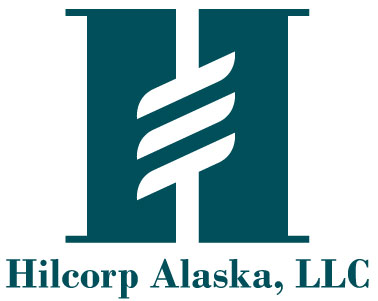Title Page
-
Site conducted
-
Conducted on
-
Prepared by
-
Location
-
Participants:
1.0 General Worksite
-
1.1 Safety signs / warnings posted where appropriate? 1910.145(c)(2)
-
1.2 Emergency telephone numbers posted where they can be found readily?Emergency Action Plan
-
1.3 Emergency evacuation / traffic routes identified and posted?
-
1.4 Emergency evacuation routes are kept clear of debris and are easily accessible? 1910.37(a)(3)
-
1.5 All work areas are clean and orderly? (best practice)
-
1.6 Work areas are adequately illuminated? 1926.56
-
1.7 Lights with bulbs that are not completely recessed are equipped with guards to prevent accidental contact with the bulb; 1915.82(b)(2)
-
1.8 Aisles/stairs/floors clear; drips and spills cleaned up; trash cans empty and are free of food waste. (CFR 1926.25/ AK F&G)
2.0 Eyewash, Showers, Emergency Equipment
-
2.0 Eyewash, Showers, Emergency Equipment
-
2.1 Eyewash stations are inspected monthly and maintained monthly? ANSI Z35.8.1
-
2.2 Eyewash stations are located in areas where exposure to caustic / acid is probable? 1910.151
-
2.3 Eyewash stations are sanitary and if required fluids are treated within 6 month intervals? ANSI Z35.8.1
-
2.4 Eyewash fluid is within expiration date and kept in sanitary condition? ANSI Z35.8.1
-
2.5 Emergency shower fluids are tepid and suitable for use in the event of an emergency? ANSI Z35.8.1
-
2.6 Access to eyewash stations and emergency showers is clear of obstruction? ANSI Z35.8.1
3.0 Fire Protection
-
3.0 Fire Protection
-
3.1 Fire suppression equipment inspection is current? 1910.160(b)(6)
-
3.2 Fire alarms have been tested and are functioning correctly? 1910.160(b)6)
-
3.3 Fire extinguishers are provided and readily accessible? 1910.157(c)(1)
-
3.4 Fire extinguisher inspections are performed and current (monthly)? 1910.157(e)(1)(2)
4.0 Exit Routes
-
4.1 Exit routes are clearly marked and illuminated by reliable light source? 1910.37
-
4.2 All doors, passageways, or stairways that are not exits are marked as “Not an Exit”? 1910.37
-
4.3 All Exit doors are clearly identified with appropriate signage of at least 5” letters? 1910.37
-
4.4 All exits are free from obstruction? 1910.37
-
4.5 Sufficient exits to permit prompt emergency escape? 1910.36
-
4.6 Where panic hardware is installed the hardware functions easily in the direction of exit traffic? 1910.36
-
4.7 Exterior door walkways are maintained to prevent ice/snow related falls; sand, nut-plug and shovel are readily available on site. (CFR 1910.211/1910.219)
-
4.8 All exterior ingress and egress doorways are free of overhead ice/snow hazards. (CFR 1910.211/1910.219)
5.0 Walkways / Floor Openings
-
5.1 Aisles and paths kept clean and clear? 1910.22(c)
-
5.2 Wet surfaces are covered with non-slip material or are maintained by personnel? 1910.22(a)(2)
-
5.3 Sumps / Floor openings are covered or guarded? 1910.23(c)(1)
-
5.4 Toe boards are installed around edges of permanent floor openings? 1910.23(c)(1)
-
5.5 Grates and floor covers designed so that foot traffic / rolling equipment will not affect their placement? 1910.22(d)(1)
6.0 Stairways / Elevated Work Surfaces
-
6.1 Stairs equipped with standard railings with four or more stair risers? 1910.28(b)(ii)
-
6.2 Stairways at least 22” wide? 1910.25(c)(4)(i)
-
6.3 Stair risers are uniform from top to bottom and no more than 7.5” tall? 1910.25(b)(3)
-
6.4 Steps are designed to be a slip resistant surface? - Best Practice
-
6.5 Handrails located between 30” and 34” of the surface of the stair treads? 1910.28
-
6.6 Handrails capable of withstanding 200# of force when applied within 2” of the top rail edge? 1910.28
-
6.7 Signs posted showing the surface load capacity? 1910.176(b)
-
6.8 Surfaces elevated more than 48” have standard guardrails provided? 1910.28(b)1(i)
-
6.9 Elevated surfaces that expose workers or machinery to falling objects protected with 4” toe boards? 1910.28(b)(1)(i)
-
6.10 Permanent means of access and egress provided to elevated work surfaces? 1910.22(c)
7.0 Ladders
-
7.1 Ladders inspected and maintained in good condition? 1910.23
-
7.2 Non-slip feet provided on each ladder? 1910.23
-
7.3 Ladder rungs and steps free from grease and oil? 1910.23
-
7.4 Ladders with missing steps or cleats, broken side rails, or faulty equipment are removed from service? 1910.23
-
7.5 Extension ladders are appropriately set up extending 3 feet above the surface being accessed? 1910.23
-
7.6 Ladders are clearly marked with caution signs and load limits? 1910.23
-
7.7 Ladder rungs are uniformly spaced at 12” center to center? 1910.23
8.0 Flammable and Combustible Storage
-
8.1 Approved containers used for the storage and handling of flammable and combustible liquids? 1910.106(a)(32)
-
8.2 Flammable liquids kept in closed containers when not in use? 1910.106(d)(5)
-
8.3 Flammable liquids are dispensed from bulk containers using bonding or grounding straps? - ASH
-
8.4 Flammable and combustibles are placed in approved flammable storage cabinets when not in use? 1910.106(d)(5)iii
-
8.5 Flammable storage cabinets are kept closed and latching mechanisms function properly? 1910.106(d)(5)i-v
-
8.6 Combustible materials are not placed on the top of flammable storage cabinets? - NFPA 30
9.0 Hazardous Material Storage
-
9.1 All containers or tanks with recyclable hydrocarbons are labeled as “Used Oil.” (40 CFR 279)
-
9.2 Oily waste properly bagged. No chemicals are mixed in oily waste bags. (40 CFR 262)
-
9.3 SAA containers labeled hazardous waste and kept closed. (40 CFR 262)
-
9.4 All hazardous materials are labeled and MSDS is available
-
9.5 Battery room doors closed and ventilation system operating (CFR 1926.441)
-
9.6 Battery room has required PPE readily available, including eye wash capabilities (CFR 1926.441)
10. Material Handling / Hoisting and Auxiliary Equipment
-
10.1 Safe clearance for equipment through aisles and doorways? 1910.176
-
10.2 Mechanized equipment inspected daily prior to use? 1910.178
-
10.3 Hooks are equipped with safety latches and are in good condition? 1926.251
-
10.4 All rigging and lifting equipment has been inspected annually and are color coded to reflect current year of inspection? 1926.251
-
10.5 Stacked materials are interlaced to prevent sliding or tipping? 1926.250
-
10.6 Shelves and pallet racks are secured from tipping or falling? 1926.250
-
10.7 Maximum load limits posted on shelving and rack systems? 1926.250
-
10.8 Electrical hoists are equipped with functioning limit devices at highest and lowest point? 1926.554
-
10.9 Rated load of hoist is legibly marked and visible to the operator? 1926.554
-
10.10 Controls for hoists are plainly marked to indicate the direction of travel or motion? 1910.179
-
10.11 Hoist Inspection Certifications are maintained on site? 1926.179
11.0 Process Equipment
-
11.1 Pressure Equipment: Bull plugs installed, valves properly positioned, proper utility fittings in place
-
11.2 All required PSVs are in service; valve handles locked and car-seals in place. (CFR 1910.147)
-
11.3 Adequate supply of various lock out tag out devices on hand and available for use. (CFR 1910.147)
-
11.4 Hazard warning flagging used correctly and not used for energy isolation (CFR 1910.147)
-
11.5 Hoses and fittings: Correct application (service/pressure), signs of damage (hose, fitting, clamping device), whip-checks in use, working pressure noted on hose. (CFR 1926.302)
-
11.6 All fired equipment positioned such that the exhaust doesn’t enter air/fan intakes. (CFR 1910.6 )
-
11.7 Spill/leak containment drip pans in place and maintained where needed
-
11.8 Ground straps in use for Flammable Liquid Storage & Transfer; approved containers used and labeled; containers provided with self-closing valve; drums/container/vessels labeled (NFPA 704M label) where required
-
11.9 Emergency stops and critical electrical controls are identified
12.0 Machine Guarding
-
12.1 Is sufficient clearance provided around and between machines to allow for safe operation?
-
12.2 Is equipment and machinery securely placed and anchored when necessary to prevent tipping?
-
12.3 Is power shut off switch in the reach of the operator’s position at the machine?
-
12.4 Are all emergency stop buttons brightly colored and or placarded?
-
12.5 Pulleys and belts within 7 feet of the floor or working level are properly guarded?
-
12.6 Chains and gears properly guarded?
-
12.7 Is the grinder effectively grounded?
-
12.8 Is cleanliness maintained within the vicinity of the grinder?
13.0 Abrasive Wheel Equipment
-
13.1 Are work rests installed and kept adjusted to within 1/8” of the wheel? 1926.303
-
13.2 Is the adjustable tongue guard used and kept adjusted to within ¼” of the wheel? 1926.303
-
13.3 Do side guards cover the spindle, nut, and flange, and 75% of the wheel diameter? 1926.303
-
13.4 Are bench and pedestal grinders permanently mounted? 1910.212
-
13.5 Maximum RPM consistent between abrasive wheel and grinder motor? 1910.251
14.0 Compressors / Compressed Air Equipment
-
14.1 Compressors are equipped with pressure relief valves and pressure gauges? 1910.169(b)(3)i
-
14.2 Signs posted warning employees of the automatic starting features if equipped? 1910.145(c)(2)
-
14.3 All moving parts/belt systems are adequately guarded to prevent injury to personnel? 1910.213(a)
-
14.4 Air nozzles are designed to reduce airflow to 30psi? 1910.242
-
14.5 Airlines are attached using whip checks? 1926.302(b)(1)
-
14.6 Compressed air is not being used or directed at personnel in the area? 1910.242
15.0 Compressed Gas Cylinders
-
15.1 Cylinders are legibly marked to clearly identify the gas contained? NFPA 63.3.2
-
15.2 Cylinders are stored in areas that are protected from external heat sources? NFPA 63.3.2
-
15.3 Cylinders stored in appropriate carts or racks which prevent them from tipping or falling? 1926.350
-
15.4 Valve protector caps installed on cylinders when not in use? 1926.350
-
15.5 Cylinders stored at least 20’ away from combustible materials? 1926.350
-
15.6 Fuel gas and oxygen cylinders are stored a minimum of 20’ apart or separated by a 1-hour fire wall? 1926.350
-
15.7 Cylinders are free of visible deterioration and maintained with current hydro inspection dates? NFPA 55
16.0 Electrical
-
16.1 Extension cords in use are in good condition and have a grounding conductor? 1910.304
-
16.2 GFCIs are installed on AC circuits where construction, demolition, modifications, alterations, or excavations are performed? 1910.304
-
16.3 Electrical wiring and cords are in good condition without deteriorated insulation, exposed wire, or frays? 1910.303
-
16.4 Electrical cords and cables free of splices and taps? 1910.303
-
16.5 Cord, cable, and raceway connections are intact and secure? 1910.303
-
16.6 Disconnecting switches and service breakers are clearly labeled to indicate their use or equipment served? 1910.303
-
16.7 Sufficient access and working space provided and maintained around all electrical equipment to permit safe operation and maintenance? NEC 2017
-
16.8 Unused opening including conduit knockouts in electrical enclosures and fittings protected with appropriate covers, plugs, or plates? 1910.303
-
16.9 Switches, receptacles, junction boxes, etc., provided with tight fitting covers or plates? 1910.303
-
16.10 Electrical equipment is clearly marked or labeled with appropriate warnings? 1910.303
-
16.11 Temporary wiring is not used in a permanent location? 1910.304
-
16.12 Electrical Panels: are marked, have clear access, and outlets, switches, and boxes are covered. 1910.303
17.0 Hand Tools & Power Tools
-
17.1 Tools and equipment maintained in good condition? 1926.300
-
17.2 Hand tools such as chisels, punches, etc. which develop mushroomed heads reconditioned or replaced? 1926.301
-
17.3 Broken handles on hammers, axes and similar equipment removed from service and replaced? 1926.301
-
17.4 Worn or bent wrenches are removed from service replaced? 1926.301
-
17.5 Jacks inspected periodically and weight limits posted on the equipment? 1926.305
-
17.6 Tools stored in dry, secure location? 1926.300
-
17.7 Are guards installed on grinders, saws, and other similar equipment? 1926.301
-
17.8 Power tools appropriately grounded with grounding pin or of the approved double insulated type? 1926.302
-
17.9 Effective guards in place over belts, pulleys, chains, and sprockets? 1926.301
-
17.10 Pneumatic and hydraulic hoses on power operated tools in good condition with no sign of damage or deterioration? 1926.300
-
17.11 Bench and free standing tools are appropriately secured to work benches or floors? 1910.212
-
17.12 Electrical tools are connected directly to receptacle without the use of an extension cord when in permanent location? 1910.304
18.0 Additional Findings
-
Additional Findings:
-
Person Responsible for Ensuring Correction of all noted deficiencies:
-
Due Date:








